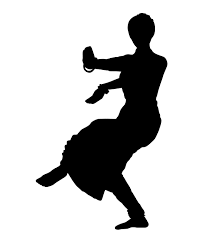The influence of Bharatanatyam on western dance is a captivating example of
cross-cultural inspirations and artistic exchanges. Bharatanatyam is an Indian classical
dance form with a rich history and deep cultural significance, while western dance
encompasses a diverse range of styles and traditions from Europe and America. The
interplay between these 2 dance forms has led to a dynamic exchange of ideas,
movements, and aesthetics.
Movement Aesthetics
Bharathanatyam is known for its intricate hand gestures (mudras), graceful body movements, and expressive facial expressions. These elements have captured the attention of western choreographers and dancers, inspiring them to incorporate similar fluidity and expressiveness into their own work. This has led to the enrichment of western dance movements that emphasize on storytelling and emotion.
Fusion Choreography
Choreographers in the West have explored fusion choreography that combines elements of bharathanatyam with western dance style. Blending of tradition has resulted in performances that are both culturally unique and universally appealing. Dancers might incorporate bharatanatyam footwork and hand gestures into contemporary or ballet routines, creating a captivating synthesis of movement language.
Rhythmic Complexity
Bharathanatyam places significant emphasis on rhythm, utilizing complex rhythmic patterns and footwork sequences. This rhythmic complexity has intrigued western choreographers, leading them to experiment with intricate rhythms in their own works. This influence can be seen in tap dance routines, modern dance pieces, and even in the incorporation of rhythmic body percussion.
Storytelling and Emotion
Bharathanatyam is often used as a medium to convey stories from Hindu mythology and Indian epics. The emphasis on storytelling through movement and expression has impacted the western dance, encouraging dancers to delve deeper into conveying narratives and emotions through their performances.
Costume and Visual Elements
The elaborate costumes, jewellery, and makeup associated with partner temp performances have fascinated western designers and artists. Elements such as vibrant colours, intricate patterns, and striking accessories have influenced western dance costumes and stage design, adding a new dimension to the visual aesthetics of performances.
Cultural Awareness and Collaboration
The exploration of Bharathanatyam by western dancers and choreographers has fostered cultural awareness and appreciation. Collaborative projects between artists from different backgrounds have led to a greater understanding of each other's artistic traditions and cultural values.
Education and Training
Bharathanatyam techniques and pedagogical approaches have been integrated into dance education curriculum in the West. Dancers often study Bharathanatyam movements to broaden their technical skills set and gain a deeper understanding of movement mechanics and expression.
In conclusion, the influence of bharatanatyam on western dance is a prime
example of how artistic traditions can transcend cultural boundaries and inspire
new creative directions. This cross-cultural exchange has led to the enrichment of
both dance forms, fostering a deeper appreciation for the diversity and beauty of
global dance traditions.






Comments